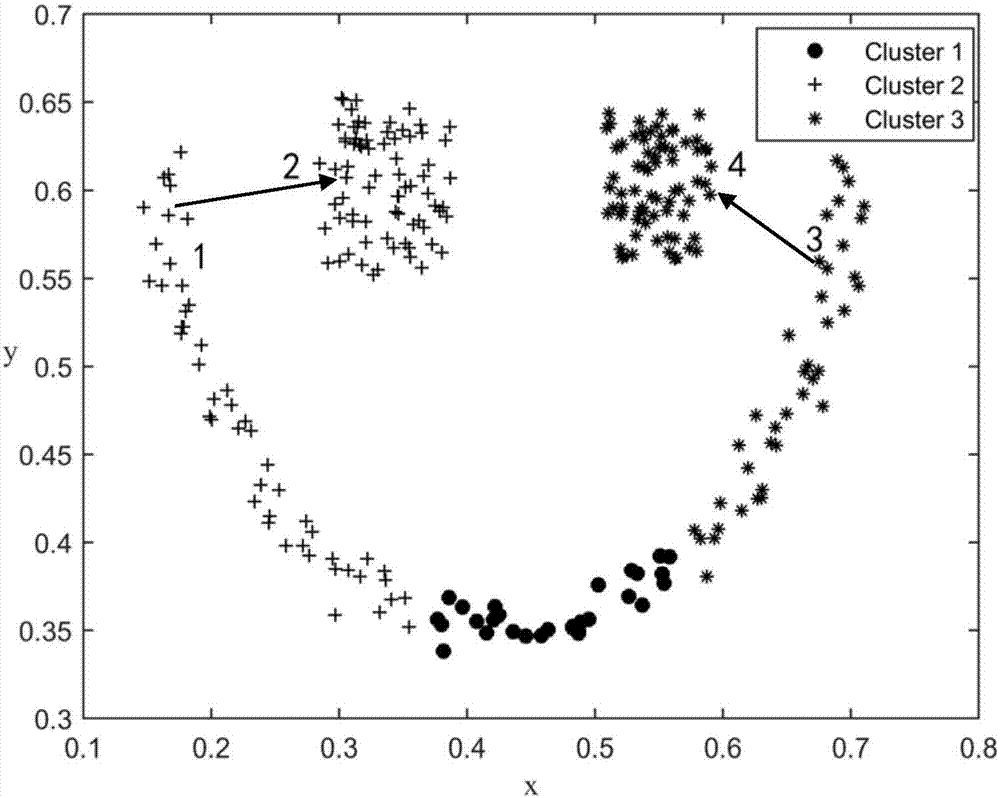Density peaks clustering method optimized by K nearest neighbor's similarity
A technology of density peak aggregation and similarity, which is applied in the direction of instruments, character and pattern recognition, computer components, etc., can solve the problems of incorrect processing of manifold data clustering, and achieve the effect of wide applicability
- Summary
- Abstract
- Description
- Claims
- Application Information
AI Technical Summary
Problems solved by technology
Method used
Image
Examples
Embodiment Construction
[0029] 1. Introduction to basic theory
[0030] 1. Density peak clustering algorithm
[0031] Density Peak Clustering Algorithm DPC is a density-based clustering algorithm that can automatically discover the number of groups and assign them. The algorithm computes the local density ρ for each point i i and the distance δ to the nearest point with a density greater than it i . where the local density ρ i It is defined as follows:
[0032]
[0033]
[0034] Among them, d ij is the Euclidean distance between sample points i and j, d c To cut off the distance, usually after sorting the distances between all points from small to large, take the distance that is 2% to 5% small.
[0035] δ i is the shortest distance from sample point i to point j with higher local density, which is calculated as
[0036]
[0037] For the point with the largest global density, let δ i =max j d ij .
[0038] by ρ i The calculation shows that the local density of the sample is aff...
PUM
 Login to View More
Login to View More Abstract
Description
Claims
Application Information
 Login to View More
Login to View More - R&D
- Intellectual Property
- Life Sciences
- Materials
- Tech Scout
- Unparalleled Data Quality
- Higher Quality Content
- 60% Fewer Hallucinations
Browse by: Latest US Patents, China's latest patents, Technical Efficacy Thesaurus, Application Domain, Technology Topic, Popular Technical Reports.
© 2025 PatSnap. All rights reserved.Legal|Privacy policy|Modern Slavery Act Transparency Statement|Sitemap|About US| Contact US: help@patsnap.com



